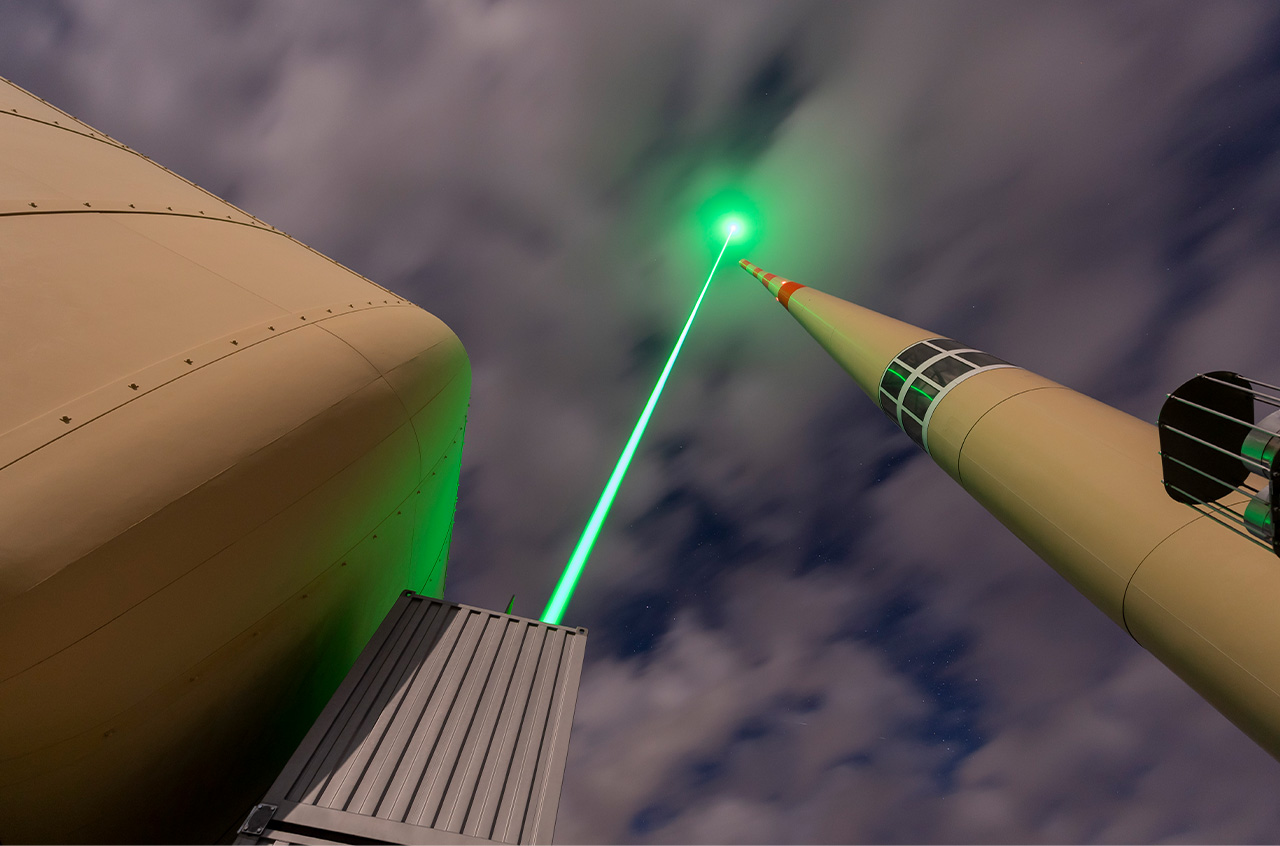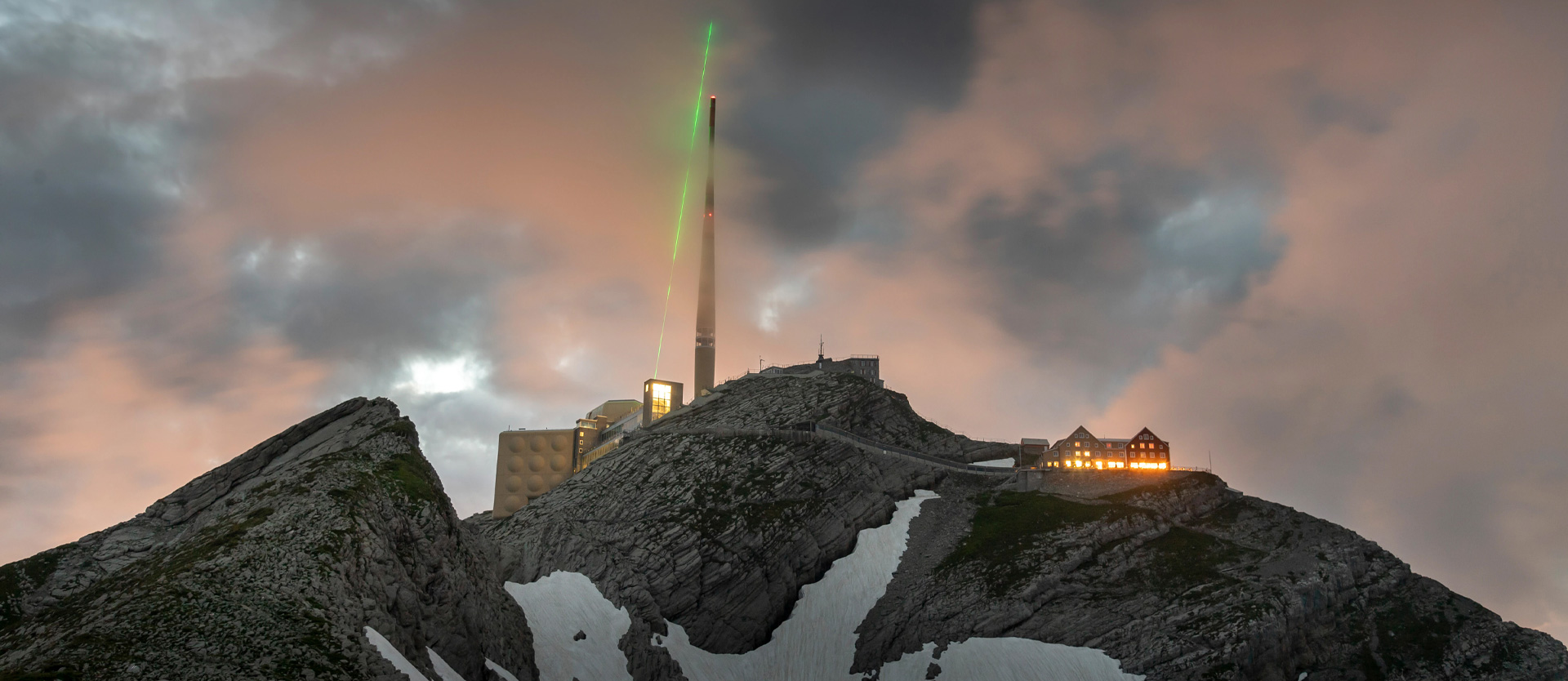Laser light as a lightning rod

Thunderstorms are fascinating forces of nature. Some thunderclouds discharge up to a billion volts onto the earth. The spectacle can take on enormous dimensions. Such a discharge can be up to several hundred kilometers long. The result is a channel of ionized air molecules heated to up to 30,000 degrees, whose explosion causes the thunder. Even antimatter and gamma rays are released during strong lightning.
There is no question that this can be dangerous to humans. But with a grounded metal rod, Benjamin Franklin found a way around 1752 to divert the violent lightning energies to where they do no harm. The system works well for individual buildings. However, Franklin lightning rods reach their limits when it comes to shielding extensive infrastructures such as airports, rocket launch pads or even power plants over their entire area.

For their experiment, the physicists installed a high-power laser on the approximately 2,500-meter-high Säntis in the Swiss Alps in the summer of 2021.
Alternatives are needed. In fact, there are now ways to safely dissipate lightning energies. And that is with laser light. This has now been proven by a team of researchers from the Polytechnic Institute in Paris and the University of Geneva, in cooperation with the company TRUMPF Scientific Laser. A powerful laser can also be used to render lightning harmless.
For their experiment, the physicists installed a high-power laser on the approximately 2,500-meter-high Säntis in the Swiss Alps in the summer of 2021. The laser system generates around 1,000 high-energy infrared laser pulses per second and fires them into the sky. In this way, the laser creates a kind of "channel" in thunderclouds, a so-called laser filament. Once lightning discharges from the thundercloud, this laser filament causes the lightning to strike the ground through the predetermined channel in a controlled manner.
The fact that the laser-based lightning rod was installed on the Säntis is no coincidence. Hundreds of lightning bolts strike there during peak thunderstorm periods in June, July and August. The physicists oriented the laser so that it shone just above the top of a 124-meter tower on the mountain peak. The tower, is equipped with sensors that register lightning discharges, electromagnetic fields, X-rays and other radiation caused by lightning.
The tower was struck by lightning at least 16 times, the researchers explain. If the laser was active, its light deflected the lightning. The lightning strike followed the laser path along its roughly 50-meter route, the team said. Only after the laser-induced filament ended did the lightning return to its original path.
"The results of the Säntis experiment provide circumstantial evidence that the filaments formed by high-intensity laser pulses direct lightning discharges over considerable distances," explains Aurélien Houard, lead author of the study. Unlike common lightning rods, the laser beams can redirect lightning high up in the atmosphere long before it gets close to the object it is protecting.
Lasers as lightning rods are still in their infancy and need to be optimized, the researchers say. "But our results pave the way for new atmospheric applications of ultrafast lasers," Aurélien Houard says. The experiments are an important step in the development of laser-based lightning protection for large infrastructures, such as airports or launch pads, Houard is convinced.
Original publication:
Aurélien Houard et al.
Laser-guided lightning
Nature photonics
Published online: 16 January 2023
doi.org/10.1038/s41566-022-01139-z













